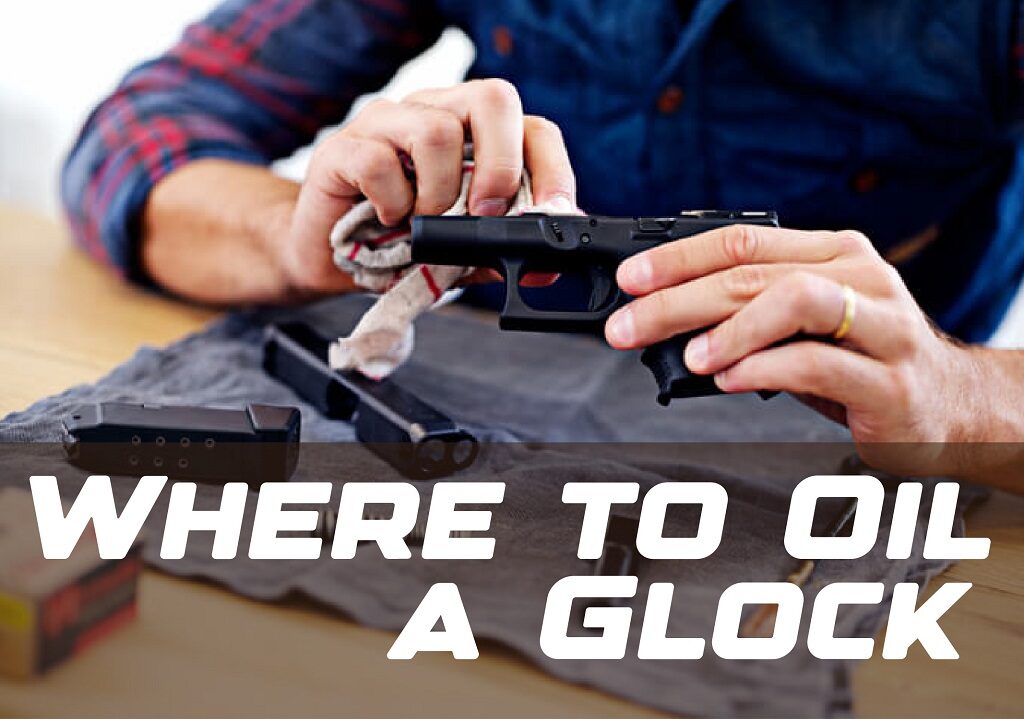Where to Oil a Glock: A Guide to Proper Lubrication

Table of Contents
- Table of Contents
- 1. Introduction: Importance of Proper Lubrication
- 2. Gather Necessary Supplies
- 3. Disassembling Your Glock
- 4. Lubrication Points on Your Glock
- 5. Applying Gun Oil Correctly
- 6. Reassembling Your Glock
- 7. Testing Your Lubrication
- 8. Maintenance Tips and Frequency
- 9. Conclusion: Smooth Functioning Glock for Enhanced Performance
Table of Contents
1. Introduction: Importance of Proper Lubrication
Properly lubricating your Glock is vital for maintaining its smooth and reliable operation. Adequate lubrication reduces friction between moving parts, prevents wear, and ensures optimal performance. In this guide, we will explore the essential points to oil on your Glock and the correct techniques for a well-lubricated firearm.
2. Gather Necessary Supplies
Choosing the Right Gun Oil
Select a high-quality gun oil specifically designed for firearms. Avoid using household oils or lubricants, as they may not provide sufficient protection and can attract dust and debris.
Cleaning Brushes and Patches
Have cleaning brushes and patches ready to remove any debris or residue before applying the oil.
Cleaning Rod or Bore Snake
Use a cleaning rod with patches or a bore snake to clean the bore and remove fouling before applying oil.
3. Disassembling Your Glock
Field Stripping the Glock
Follow the manufacturer’s instructions to field strip your Glock. Ensure it is completely unloaded before proceeding.
Removing the Slide and Recoil Spring
Once the Glock is field stripped, remove the slide and recoil spring to access the internal parts.
Removing the Barrel
Remove the barrel from the slide to access the barrel hood and locking block for lubrication.
4. Lubrication Points on Your Glock
Slide Rails and Contact Points
Apply a small amount of gun oil to the slide rails and other contact points where metal rubs against metal. These areas include the trigger bar, connectors, and the slide’s rear interior.
Barrel Hood and Locking Block
Lightly oil the barrel hood and the locking block where it makes contact with the slide. These points require minimal oil to reduce friction during cycling.
Trigger Assembly and Connector
Apply a small drop of oil to the trigger assembly and connector, ensuring they move smoothly without excess friction.
5. Applying Gun Oil Correctly
Using a Small Applicator or Brush
Apply gun oil using a small applicator or brush to ensure precise application to specific areas.
Applying a Thin and Even Coat
Avoid over-applying oil, as excess oil can attract dust and debris, potentially leading to malfunctions. Apply a thin and even coat to the lubrication points.
Avoiding Over-Lubrication
While it’s important to apply oil to the necessary points, avoid over-lubricating the firearm, as this can lead to excessive buildup and potential issues.
6. Reassembling Your Glock
Reinstalling the Barrel and Recoil Spring
After proper lubrication, reinsert the barrel and recoil spring into the slide.
Sliding the Slide Back Onto the Frame
Carefully reattach the slide to the frame, ensuring a smooth and secure fit.
Function Check After Reassembly
Perform a function check to ensure that all components are properly reassembled and function smoothly.
7. Testing Your Lubrication
Cycling the Slide and Dry Firing
Cycle the slide multiple times to distribute the oil and check for smooth movement. Dry fire the Glock to verify the trigger’s crisp and consistent operation.
Shooting a Few Rounds for Function Testing
Test-fire the Glock with a few rounds to ensure smooth cycling and reliable performance.
Related : Best Gun Oil to Prevent Rust in Gun
8. Maintenance Tips and Frequency
Regular Cleaning and Inspection
Regularly clean your Glock to remove fouling and debris. Conduct routine inspections to ensure all parts are in good condition.
Reapplying Oil as Needed
Monitor the lubrication points and reapply oil as needed, especially after extensive shooting sessions or exposure to adverse conditions.
9. Conclusion: Smooth Functioning Glock for Enhanced Performance
Properly oiling your Glock is essential for maintaining its reliable function and longevity. By following these guidelines and using the right gun oil, you can ensure your Glock performs optimally and smoothly during every shooting session. Regular maintenance and proper lubrication will help you get the most out of your firearm, ensuring accuracy and reliability when it matters most.







